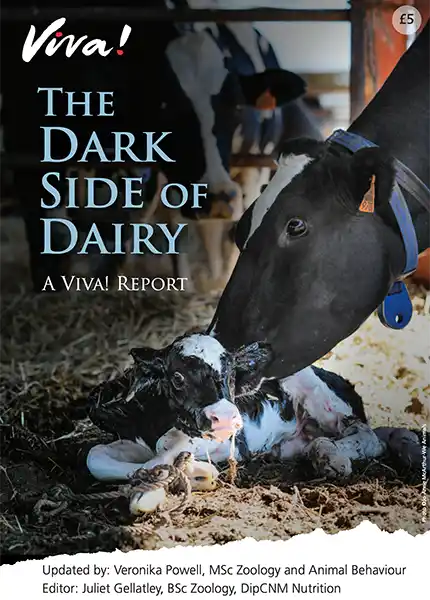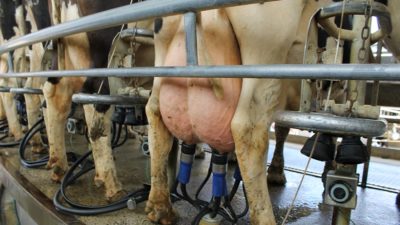A cow would naturally suckle her calf for nine months to a year, but calves born on dairy farms are taken away from their mothers within a few days of birth – often after just a few hours. A strong mother-infant bond is formed between a cow and her calf immediately after birth and the separation is extremely traumatic for both.
The calves are then placed in individual pens or hutches and fed a commercial milk replacer, either from an artificial teat or a bucket. Occasionally, they get surplus milk or milk that would be refused from milk processing due to hygiene reasons.
Young calves are very susceptible to disease. Diarrhoea (known as scours in the farming sector), often caused by low-quality or incorrectly prepared milk replacer and subsequent malnutrition and dehydration, is the main cause of calf death. To reduce the risks, dairy calves are weaned on to solid food by five weeks of age – much sooner than is natural for them.
Under welfare regulations, calves may be housed in individual stalls or hutches (indoors or outdoors) until they are eight weeks old. Legally, calves must be removed from the hutches and group-housed by no later than eight weeks of age. Viva! have filmed calves up to 12 weeks old still isolated in violation of the law.
Individual housing denies calves vital exercise and social contact. Group housing allows more natural social behaviour but also increases the risk of airborne diseases such as pneumonia – the most common disease of weaned calves. Essentially, it is impossible to artificially rear calves, away from their mothers, in a way which fulfils their natural needs and behaviours without compromising their health.
Female calves will eventually enter the dairy herd, replacing worn-out cows, being forcibly impregnated for the first time when they’re only 13-20 months old.
Male calves are of little use to a dairy farmer. Like female calves, bull calves are removed from their mothers shortly after birth, housed in stalls or hutches and fed milk replacer. It used to be common practice for farmers to shoot bull calves at birth, but due to bad publicity major supermarkets and dairy processors have banned it. The use of sexed-semen is on the rise to reduce the number of male calves born, but others are sold on to beef farms through livestock markets or raised for veal. They spend most of their short lives – usually between six months and one year – confined in buildings and yards. High mortality rates in these systems are common as it is not financially worthwhile for farmers to treat illnesses.
In 2015, industry figures stated 95,000 newborn male calves were shot on-farm and was later deemed ‘dairy’s dirty secret’. More recently, in 2020, an AHDB report estimated around 60,000 male calves were killed on-farm every year – which is about 15 per cent of all bull calves born on dairy farms. Viva! filmed the shocking fate of the male calves at farms supplying milk for the confectionery giant Cadbury. For more information and footage, click here.
According to Red Tractor, by 2023 95 per cent of milk produced in the UK will come from dairies no longer shooting male calves. However, the ban doesn’t extend to onward trade and calves sold to dealers can find themselves at the slaughterhouse at less than one-month-old. A 2021 Freedom of Information request confirmed a staggering 65,000 calves were killed in this way during 2020.
For more information on the dairy industry, click here.









